
Berlin vs Nuremberg: A Tale of Two German Cities – Which Offers the Better Experience?
Berlin and Nuremberg represent two distinct sides of Germany’s personality — these cities offer unique experiences that draw millions of visitors annually. Berlin is better for longer trips of 2-7 days with its diverse attractions and vibrant culture. Meanwhile, Nuremberg works well for shorter visits of 1-3 days due to its compact size and preserved Bavarian charm.
Looking to [search flights to Germany]? These two cities showcase different aspects of German history and lifestyle. Berlin is a modern metropolis with world-class museums and nightlife, while Nuremberg keeps its traditional character with cobblestone streets, fairy-tale architecture, and famous Christmas markets.
The cost factor plays a big role in choosing between these destinations. Berlin costs about 18% more than Nuremberg for daily expenses. This makes Nuremberg a smart pick for budget-conscious travelers who want to experience authentic German culture without the high prices of the capital city.
Contents
- Historical Significance
- Berlin’s Role in the Cold War
- Nuremberg’s Historical Trials
- Cultural Attractions and Museums
- Berlin’s Museum Island
- Nuremberg’s Germanic National Museum
- Urban Landscapes and Architecture
- Comparing Skylines
- Architectural Style and Design
- Culinary Scene and Local Foods
- Berlin’s Unique Dishes
- Nuremberg’s Traditional Cuisine
- Lifestyle and Living
- Cost of Living Comparison
- Quality of Life
- Entertainment and Nightlife
- Berlin’s Vibrant Club Scene
- Nuremberg’s Cozy Bars and Pubs
- Social and Cultural Events
- Festivals in Berlin
- Nuremberg’s Christmas Market
- Family and Couples Activities
- Attractions for Kids in Berlin
- Romantic Spots in Nuremberg
- Day Trips and Regional Excursions
- Exploring Bavaria from Nuremberg
- Berlin’s Nearby Attractions
- Frequently Asked Questions
- What distinguishes the Christmas markets in Nuremberg from those in Berlin?
- Can you differentiate the costs of living between Berlin and Nuremberg?
- What are the historical significances that contribute to Nuremberg’s fame?
- How does the Nuremberg Trials history compare with Berlin’s role during the war?
- What should one expect when attending a live event in Berlin versus Nuremberg?
- What linguistic nuances set apart ‘Nuremberg’ from ‘Nürnberg’?
- More Travel Guides
Historical Significance
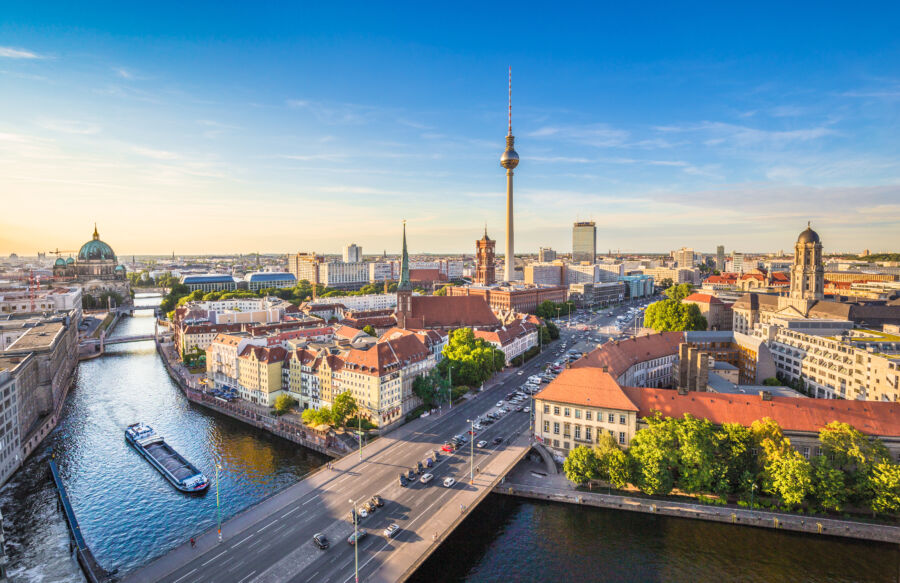
Both Berlin and Nuremberg played vital roles in shaping modern Germany through distinct historical events that changed the course of world history. These cities are living monuments to different chapters of German and European history.
Berlin’s Role in the Cold War
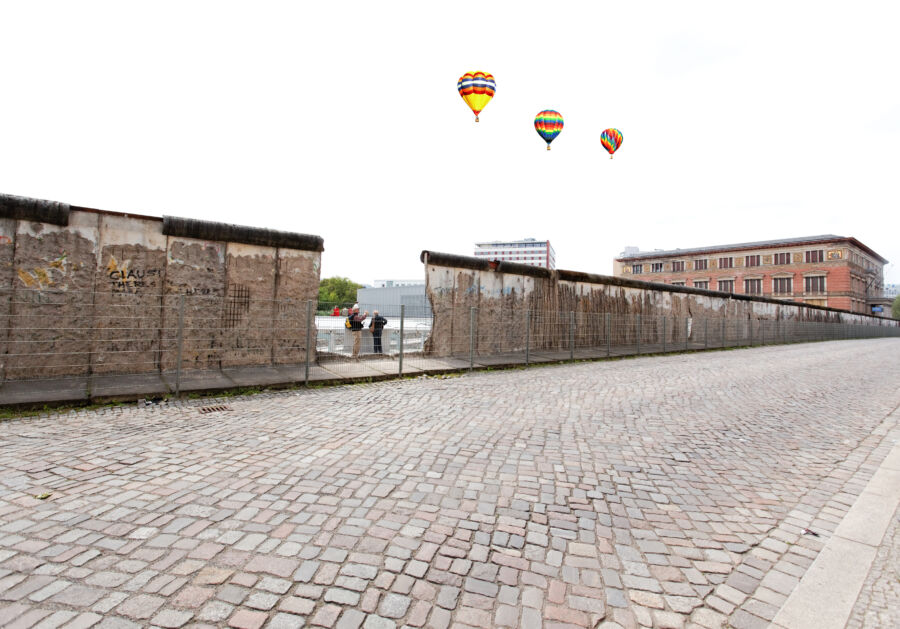
The Cold War transformed Berlin into a symbol of a divided Europe. The Berlin Wall split the city from 1961 to 1989, with East Berlin under Soviet control and West Berlin as a democratic enclave. Checkpoint Charlie became the main crossing point between the two sides and a flashpoint for Cold War tensions.
The wall’s fall in 1989 marked a turning point. East Germans poured through gaps in the barrier as border guards stood down. People chipped away pieces of the wall with hammers and pickaxes while others danced on top of it.
Today, parts of the wall remain as memorials. The East Side Gallery features colorful murals painted on a 1.3-kilometer stretch. Once stuck in the “death strip” between East and West, Brandenburg Gate now symbolizes German reunification.
Nuremberg’s Historical Trials
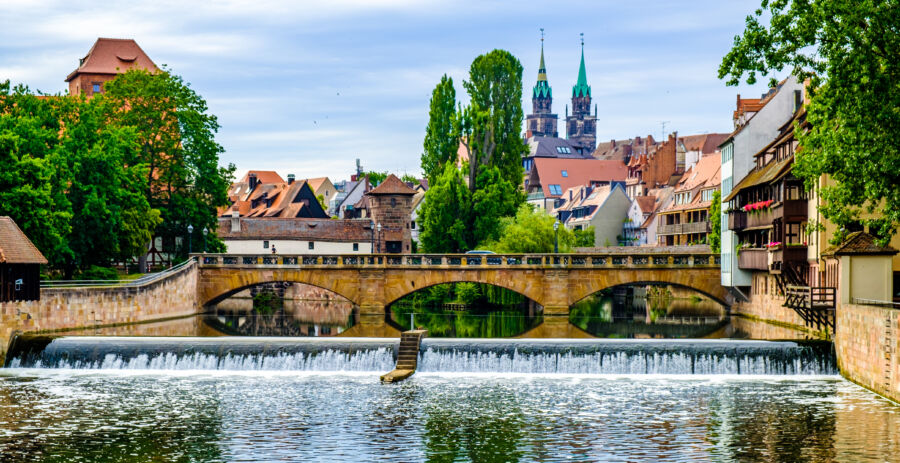
The Nuremberg Trials of 1945-1946 made this city the center of international justice after World War II. Nazi leaders faced charges of war crimes and crimes against humanity in Courtroom 600 of the Palace of Justice.
These trials set new standards for international law. The main trial lasted 10 months and brought 24 high-ranking Nazi officials to justice. Twelve defendants received death sentences.
The courtroom still exists as part of the Nuremberg Trials Memorial. Visitors can see the actual bench where judges sat and the dock where defendants stood. The memorial includes exhibits with original documents, photos, and film footage from the trials.
Cultural Attractions and Museums
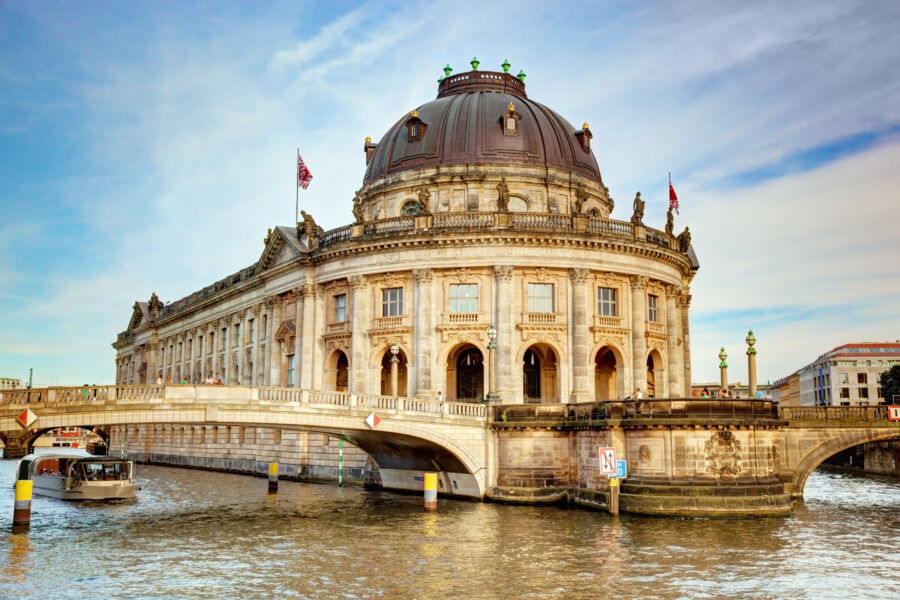
Both cities offer world-class museums that showcase Germany’s rich history and cultural heritage through impressive art collections and historical artifacts.
Berlin’s Museum Island

Museum Island is a UNESCO World Heritage site in the heart of Berlin. Five amazing museums make up this cultural hub on the Spree River. The Pergamon Museum draws huge crowds with its ancient Greek and Middle Eastern treasures, including the stunning Pergamon Altar.
The Altes Museum is a beautiful neoclassical building that displays Greek and Roman antiquities. Art lovers flock to the Alte Nationalgalerie for its 19th-century paintings and sculptures collection.
The Neues Museum houses the famous Nefertiti bust along with Egyptian artifacts. The Bode Museum rounds out the island with its Byzantine art and sculpture collection.
Nuremberg’s Germanic National Museum
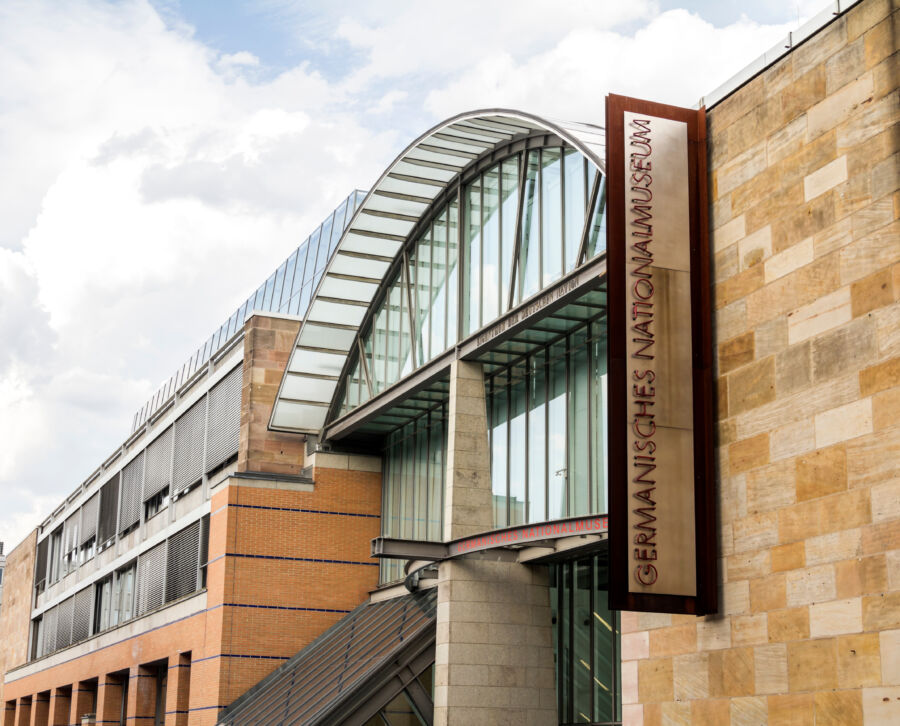
The Germanic National Museum stands as Germany’s largest museum of cultural history. Founded in 1852, it holds over 1.2 million objects that tell the story of German-speaking regions from prehistoric times.
The museum’s art collection includes masterpieces by famous German artists. Notable works include paintings by Albrecht Dürer and Rembrandt.
Unique exhibits showcase medieval armor, historical musical instruments, and traditional folk art. The museum’s architecture blends historic monastery buildings with modern additions. Visitors can explore fascinating artifacts, such as the oldest surviving globe in the world and precious manuscripts from the Middle Ages.
Urban Landscapes and Architecture
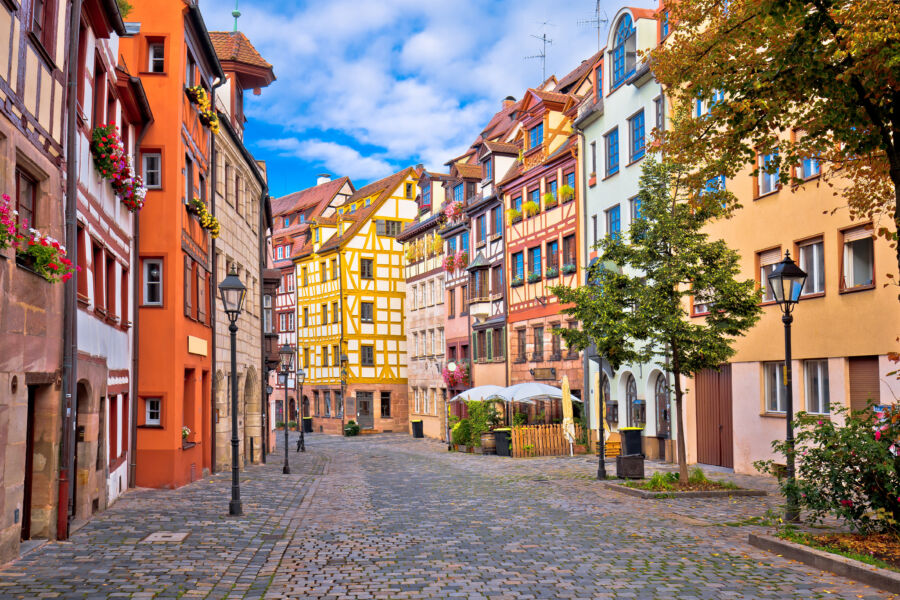
Berlin and Nuremberg showcase vastly different approaches to city planning and architecture. Berlin embraces modern design with bold statements, while Nuremberg maintains its medieval charm through preserved historic buildings.
Comparing Skylines

Berlin’s skyline stretches wide with a mix of glass-and-steel skyscrapers and Soviet-era buildings. The TV Tower, at 368 meters tall, is the city’s most recognizable landmark. Modern office towers dot the Potsdamer Platz district, creating a contemporary urban scene.
Nuremberg’s skyline tells a different story. Medieval towers and spires dominate the view, with the Imperial Castle sitting proudly on a sandstone ridge. Red-tiled roofs spread across the old town, creating a classic Bavarian atmosphere that feels like stepping back in time.
Architectural Style and Design

Berlin’s buildings reflect its complex past and forward-thinking present. The city mixes Bauhaus influences with cutting-edge designs like the Reichstag glass dome. Street art and urban installations add splashes of creativity to concrete facades.
The narrow streets of Nuremberg’s old town feature well-preserved half-timbered houses from the 15th and 16th centuries. Gothic churches and Renaissance merchant homes create a uniform medieval appearance. The city walls still stand, complete with their original towers and gates.
Post-war reconstruction took different paths in each city. Berlin embraced bold new designs, while Nuremberg carefully rebuilt many historic structures using traditional methods and materials.
See Related: Exploring Germany in 7 Days: An Itinerary of Castles, Culture, and Cuisine
Culinary Scene and Local Foods

Both cities offer distinct food experiences that showcase unique regional specialties. The contrasts between Berlin’s modern street food culture and Nuremberg’s centuries-old recipes make each destination special for food lovers.
Berlin’s Unique Dishes
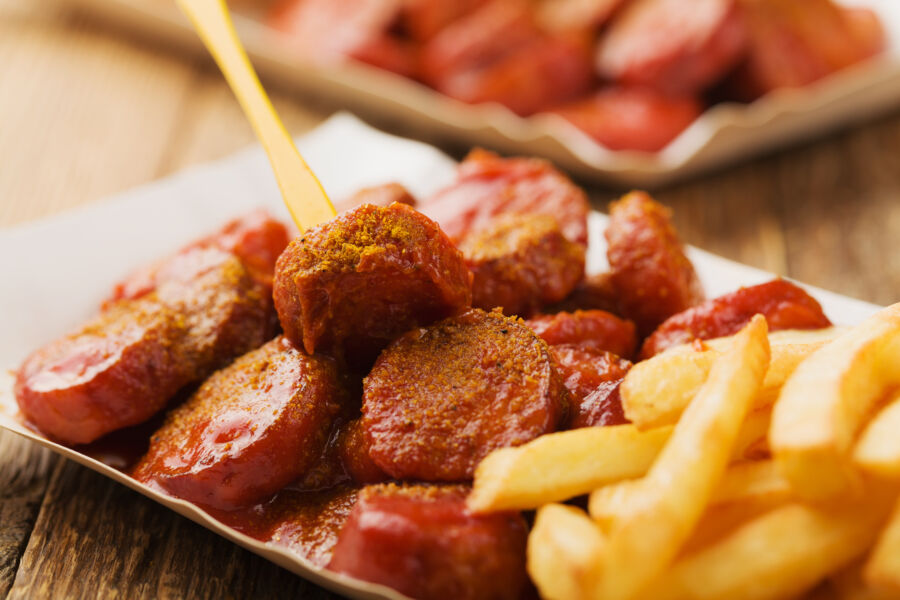
Currywurst rules Berlin’s street food scene. This beloved dish combines sliced sausage with a spicy curry-spiced ketchup sauce, often served with crispy fries. You’ll find food carts selling this local favorite on almost every corner.
Berlin’s food scene mixes old and new. Traditional spots serve hearty schnitzel—crispy breaded cutlets served with potato salad or fries. The city’s international influence appears in its döner kebab shops and modern food halls.
Street food markets pop up across Berlin’s neighborhoods. Places like Markthalle Neun host weekly events where local vendors serve creative takes on German classics alongside global cuisine.
Nuremberg’s Traditional Cuisine

The famous Nuremberg bratwurst takes center stage here. These small, finger-sized sausages come seasoned with marjoram and other spices. Local rules require them to be no longer than 9 centimeters.
Restaurants serve these bratwursts in three ways:
- Grilled and paired with sauerkraut
- Three in a roll (Drei im Weggla)
- Six on a pewter plate with potato salad
The city’s gingerbread (Lebkuchen) is a perfect sweet treat. Local bakers still use medieval recipes to create these spiced cookies, especially popular during Christmas markets.
Food festivals celebrate Nuremberg’s culinary heritage throughout the year. Many restaurants near the main square serve traditional Franconian dishes like Schäufele (pork shoulder) with potato dumplings.
Lifestyle and Living

Living costs and quality of life vary significantly between these two German cities. Berlin offers vibrant urban living, while Nuremberg provides a more relaxed atmosphere with strong Bavarian traditions.
Cost of Living Comparison

Monthly expenses in Nuremberg are 14% cheaper than in Berlin. A couple needs about €4,800 in Nuremberg to maintain the same lifestyle that would cost €5,200 in Berlin.
Housing makes the biggest difference. Berlin rent prices are much higher than in Nuremberg, especially in popular neighborhoods.
Food and dining also show notable differences. A basic dinner for two at a neighborhood restaurant costs around €33 in Nuremberg versus €46 in Berlin.
Transportation costs less in Nuremberg. The smaller city size means shorter commutes and lower fuel expenses.
Quality of Life
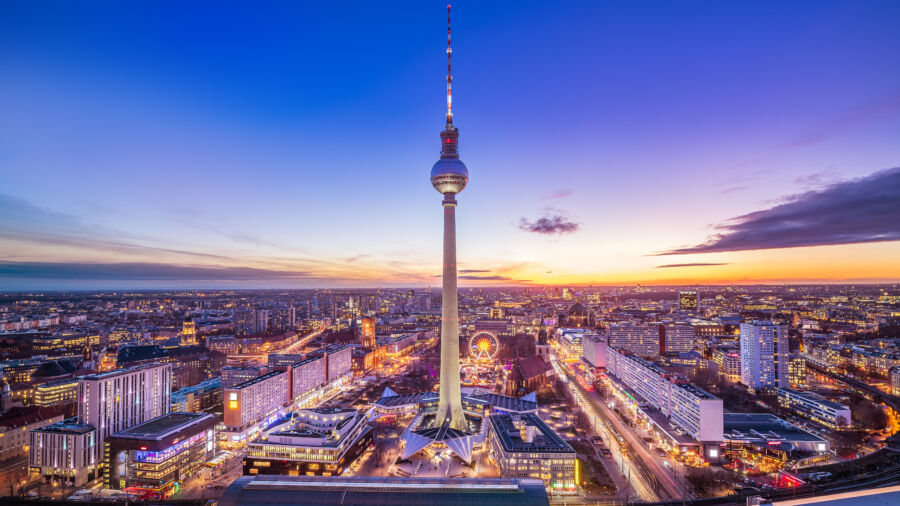
Nuremberg offers excellent family-friendly amenities with many parks, museums, and cultural activities. The historic old town provides a charming atmosphere perfect for evening walks.
The city’s smaller size means less traffic and pollution compared to Berlin. Many residents enjoy the slower pace and strong sense of community.
Berlin attracts young professionals and creatives with its dynamic nightlife and startup scene. The city pulses with energy 24/7 and offers countless entertainment options.
Both cities provide great public transit systems and green spaces. Nuremberg tends to feel safer and more manageable, while Berlin offers more diversity and cultural experiences. The work-life balance tends to be better in Nuremberg, with shorter commute times and less urban stress.
Entertainment and Nightlife
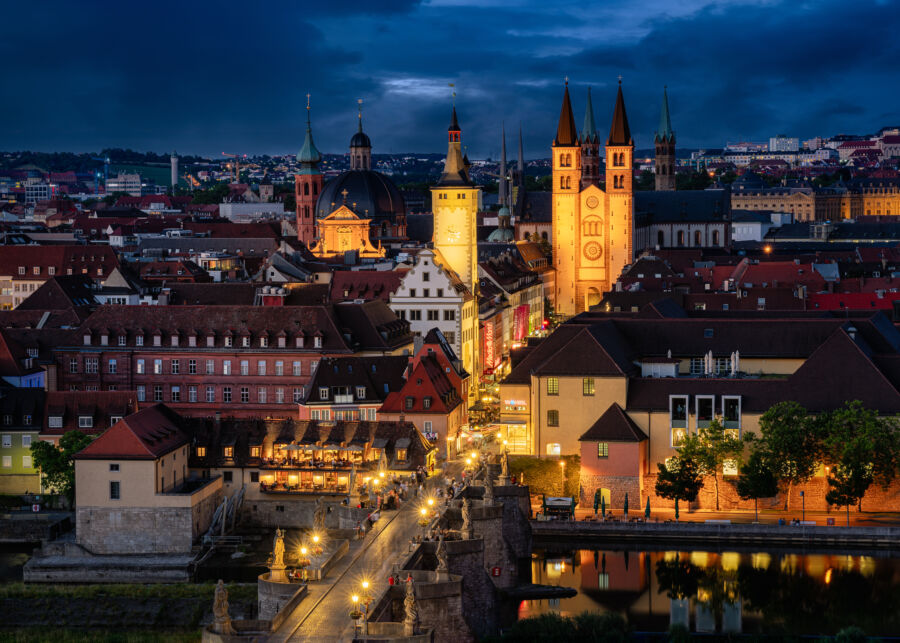
Each city offers distinct experiences after dark. Berlin shines with its world-famous clubs and electronic music scene, while Nuremberg provides a more intimate atmosphere with traditional pubs and beer gardens.
Berlin’s Vibrant Club Scene
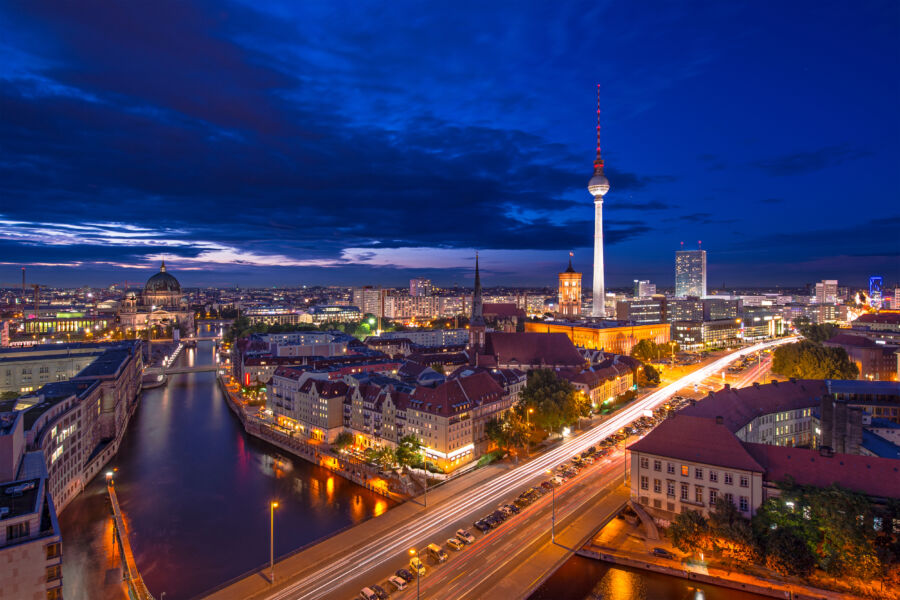
Berlin’s nightlife is legendary. The city never sleeps, with many clubs staying open from Friday night until Monday morning. Berghain, housed in an old power plant, stands as the city’s most famous club, though getting past the strict door policy can be tricky.
The RAW-Gelände complex in Friedrichshain hosts several venues in converted industrial buildings. Here, you’ll find everything from techno clubs to indie rock bars.
Many clubs are spread across the Kreuzberg and Friedrichshain districts. Popular spots include Watergate, with its amazing views over the River Spree, and Tresor set in an old bank vault.
Nuremberg’s Cozy Bars and Pubs

With its charming pub culture, Nuremberg keeps things more laid-back. The Old Town (Altstadt) features many traditional beer halls where locals and tourists mix freely.
The city’s compact size makes bar-hopping easy and safe. Most venues in the city center are within walking distance of each other.
Barfüßer is a historic brewery-restaurant that serves house-made beers in a medieval cellar. For something different, try Mata Hari Bar, which has quirky decor and creative cocktails.
Local beer gardens come alive in the summer months. The Wanderer beer garden offers a perfect spot to enjoy a cold Franconian beer under chestnut trees.
Social and Cultural Events
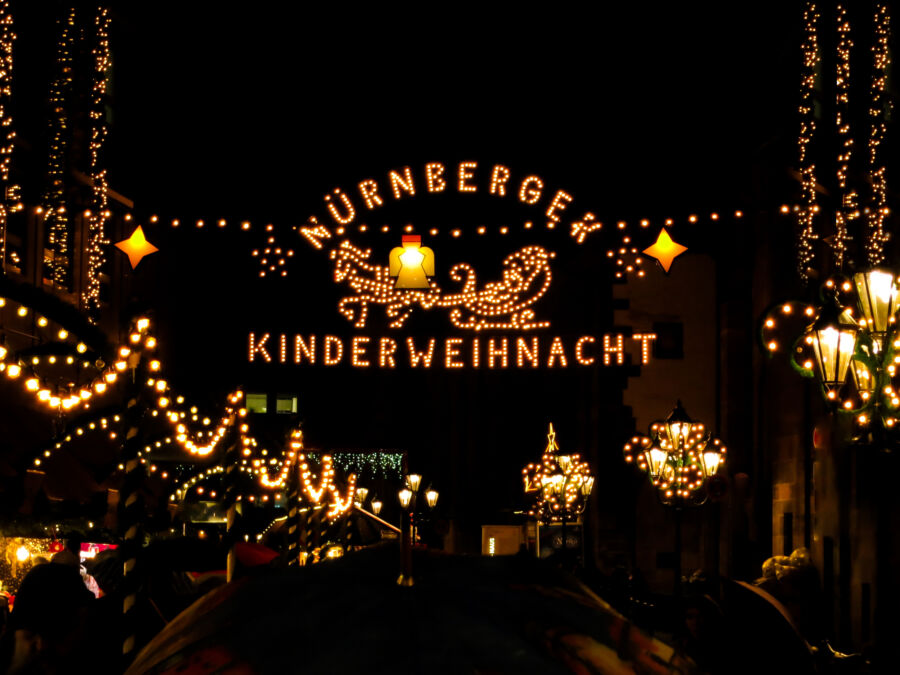
Both Berlin and Nuremberg shine with their lively events and festivals that bring neighborhoods together and attract visitors from around the globe. These cities offer unique cultural celebrations that showcase German traditions, arts, and heritage.
Festivals in Berlin
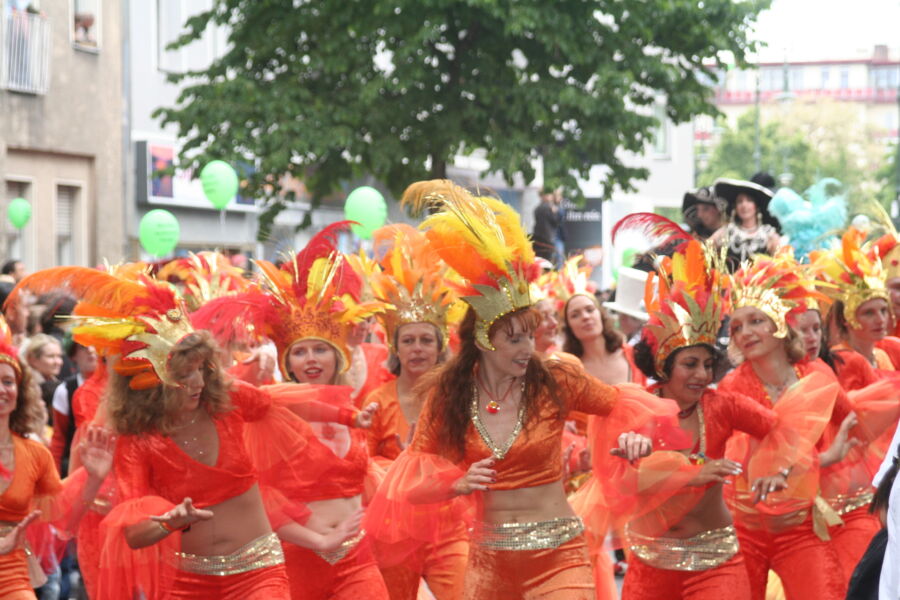
Berlin buzzes with energy during its many street festivals and cultural gatherings. The Carnival of Cultures fills the streets with colorful parades celebrating the city’s diversity each summer. Dance and music take center stage during the Fête de la Musique, where free concerts pop up across neighborhoods on June 21st.
Every February, the Berlin Film Festival draws movie stars and film buffs. Art lovers flock to the city for Gallery Weekend Berlin in spring, when hundreds of galleries stay open late and present new exhibitions.
Street food markets add flavor to Berlin’s cultural scene. The Thai Park transforms Preußenpark into an authentic Asian food market on weekends, while Markthalle Neun hosts popular street food gatherings.
Nuremberg’s Christmas Market
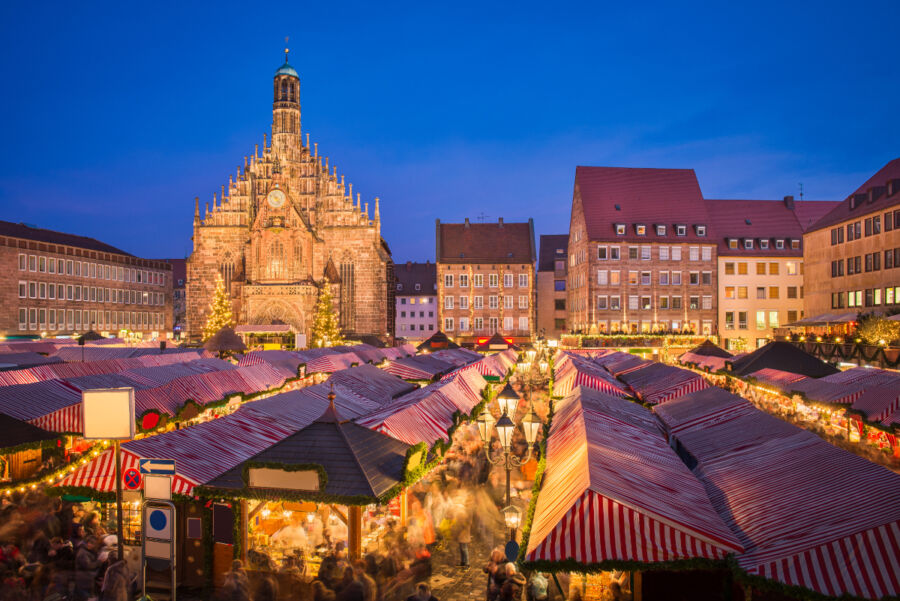
The famous Christkindlesmarkt transforms Nuremberg’s main square into a magical winter wonderland. This market occurs from mid-November through December 24th, making it one of Germany’s oldest Christmas markets.
Red and white striped booths fill the square with local crafts, ornaments, and traditional gifts. The scent of mulled wine and gingerbread creates the perfect holiday atmosphere.
Special touches make this market unique. The Christkind, a local girl dressed as an angel, opens the celebration with a ceremony. Traditional Nuremberg bratwurst and lebkuchen (gingerbread) give visitors a taste of local flavors. Kids love the children’s market section with its historic wooden carousel and special activities designed just for them.
See Related: Best Places to Visit in Germany: Must-See Destinations for Your Next Trip
Family and Couples Activities

Berlin and Nuremberg offer distinct experiences for families and romantic getaways. Each city provides unique attractions that cater to different travel styles.
Attractions for Kids in Berlin
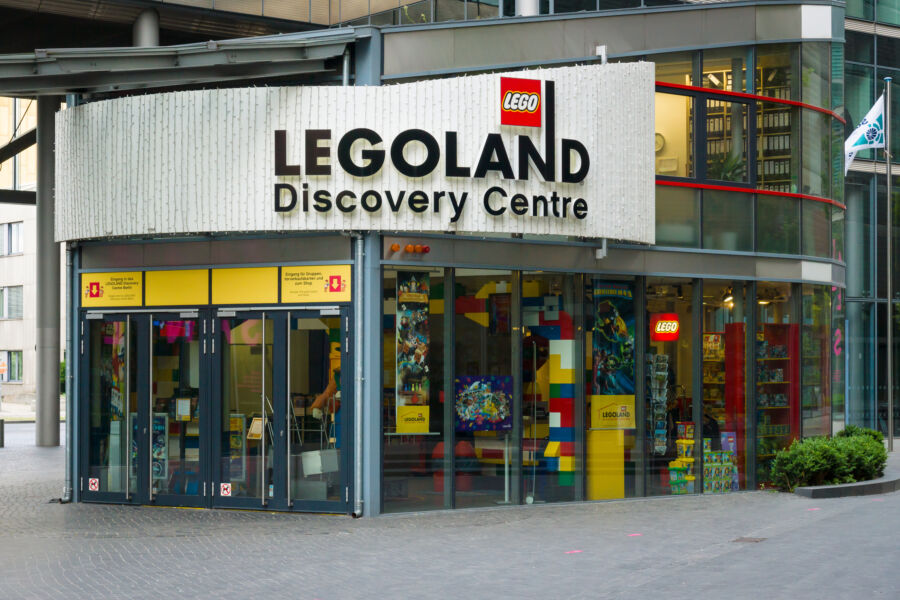
The German Museum of Technology captivates young minds with hands-on exhibits and real aircraft. Kids can climb aboard vintage trains and explore space exhibits.
The LEGOLAND Discovery Center creates magic for children aged 3-10 with building zones and rides. The center features Berlin landmarks built entirely from LEGO bricks.
The Berlin Zoo stands as Europe’s most visited animal park. Children love watching the daily feedings and meeting the famous pandas.
The DDR Museum lets families experience daily life in East Germany through interactive displays. Kids can sit in old cars and play with toys from that era.
Romantic Spots in Nuremberg

The Medieval Castle towers above the city, offering couples stunning sunset views. The castle gardens provide a peaceful escape for evening strolls.
Book a guided tour through the charming Old Town. Couples can wander past half-timbered houses and hidden courtyards.
The Hauptmarkt square transforms into a cozy spot after dark. Local cafes serve traditional treats perfect for sharing.
The Way of Human Rights art installation creates a meaningful backdrop for reflection. Its 27 pillars light up beautifully at night.
Nuremberg’s city walls offer intimate walking paths. Couples can explore ancient watchtowers and find quiet spots away from crowds.
Day Trips and Regional Excursions
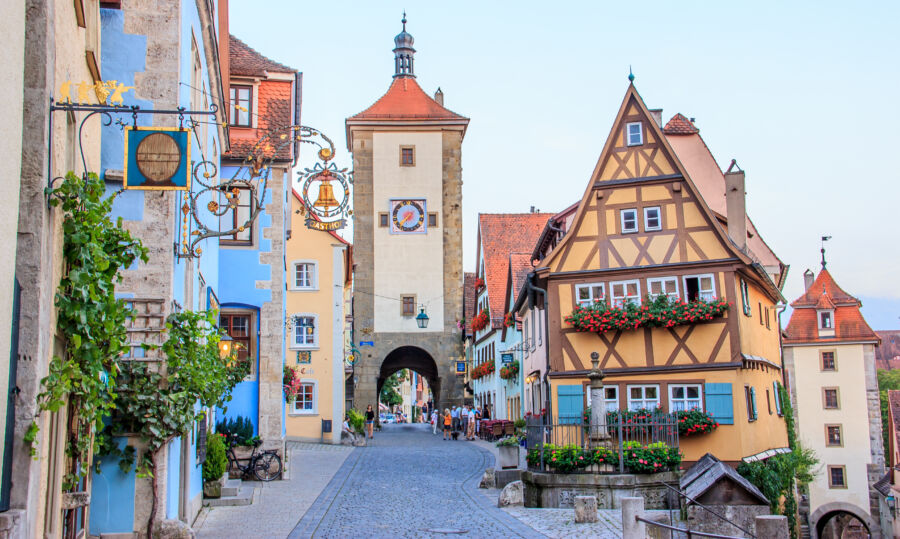
Both cities serve as excellent bases for exploring nearby attractions and hidden gems. The surrounding regions offer diverse day trip options, from historic towns to natural wonders.
Exploring Bavaria from Nuremberg

Nuremberg is ideal for exploring Bavaria’s treasures. The medieval town of Rothenburg ob der Tauber, featuring perfectly preserved architecture and charming cobblestone streets, is just 1.5 hours away by train.
Munich makes for an exciting day trip and is reachable in under two hours by train. Visitors can explore the famous Marienplatz, visit world-class museums, or enjoy traditional beer gardens.
The Franconian countryside near Nuremberg holds many surprises. Beautiful hiking trails wind through the Franconian Switzerland region, dotted with ancient castles and limestone cliffs.
Berlin’s Nearby Attractions

Potsdam stands out as Berlin’s most popular day trip destination. The UNESCO World Heritage palaces and gardens of Sanssouci Park attract visitors year-round. The trip takes just 30 minutes by train.
Leipzig’s rich musical heritage and vibrant arts scene make it worth the 1.5-hour journey. The city’s famous coffee houses and historic architecture provide a different perspective on German culture.
The Spreewald region offers a peaceful escape from Berlin’s urban energy. Visitors can take boat trips through its network of canals or try local specialties like pickles and smoked fish.
See Related: New Train Routes in Europe to Explore
Frequently Asked Questions

Berlin and Nuremberg offer distinct experiences in history, culture, and daily life. These cities showcase different sides of Germany through their unique attractions, living costs, and cultural events.
What distinguishes the Christmas markets in Nuremberg from those in Berlin?
Nuremberg’s Christkindlesmarkt dates back to the 1600s and focuses on traditional crafts and local specialties. The market features handmade ornaments, lebkuchen cookies, and strict rules about modern items.
Berlin’s Christmas markets are more diverse and spread across many neighborhoods. Each market has its theme, from Nordic-style villages to modern artistic displays.
Can you differentiate the costs of living between Berlin and Nuremberg?
Berlin’s living costs are 18% higher than Nuremberg’s. A person needs about $2,104 monthly in Berlin compared to $1,784 in Nuremberg.
Rent prices show the biggest difference. Berlin apartments cost more due to high demand and the city’s popularity with international residents.
What are the historical significances that contribute to Nuremberg’s fame?
Nuremberg served as an important medieval trading center and the unofficial capital of the Holy Roman Empire. The city’s preserved old town features stunning medieval architecture and ancient city walls.
Many German kings kept their crown jewels in Nuremberg’s castle, making it a symbol of imperial power.
How does the Nuremberg Trials history compare with Berlin’s role during the war?
The Nuremberg Trials put Nazi leaders on trial after World War II, making the city a symbol of justice. The courthouse and documentation center remain important historical sites.
Berlin holds different war memories through places like the Reichstag building and Holocaust Memorial. These sites tell stories of destruction, division, and later reunification.
What should one expect when attending a live event in Berlin versus Nuremberg?
Berlin offers massive venues like Mercedes-Benz Arena and countless alternative music spots. The city hosts big international acts and has a thriving underground scene.
Nuremberg focuses on smaller venues and traditional entertainment. The city excels in classical concerts and cultural festivals.
What linguistic nuances set apart ‘Nuremberg’ from ‘Nürnberg’?
The umlaut (ü) creates a distinct sound in German pronunciation.
‘Nürnberg’ is the German spelling and local name for the city.
‘Nuremberg’ became the common English spelling after World War II. Both names refer to the same city, but ‘Nürnberg’ remains the official German version.



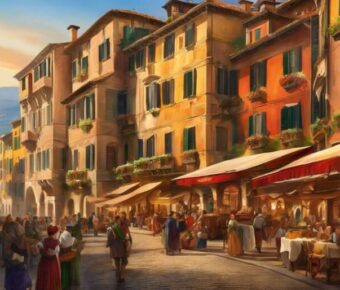
Lena
I’m super torn between these two cities for my upcoming Germany trip this summer! Anyone else notice how Berlin seems to have this raw, edgy energy while Nuremberg gives off those cozy fairytale vibes? The article mentions Berlin needs more time to explore, which makes total sense, but I’m wondering about the food scene in both places. Like, I’ve heard Berlin has amazing international cuisine and street food, but Nuremberg is supposed to have those legendary bratwurst and gingerbread. And what about the nightlife comparison? I’m not necessarily looking to party hard, but it’d be nice to know what each city offers after dark. Also, for those who’ve been to both – is it worth trying to squeeze them both into a 10-day trip, or should I just pick one and really dive deep? The history buff in me is definitely pulling me in both directions!